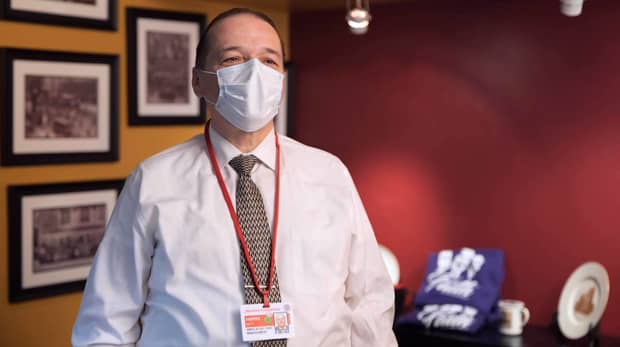This post was originally published on this site
If you wanted to vaccinate thousands of people a day, it’s hard to imagine a better locale than Upper Manhattan’s mammoth Fort Washington Armory.
A proud, redbrick building beside the gleaming complex of New York-Presbyterian Hospital, the Armory has a glorious history as home to the 22nd Regiment of the Army Corps of Engineers and the 369th Regiment of the New York National Guard. Over the years, the Armory has been a testing center for architects, engineers and nurses and, in the gritty 1980s, a homeless shelter for more than 1,000 men a night. For the past three decades, the place has had a different kind of fame as New York City’s premiere track-and-field facility, “the fastest track in the world,” with a 200-meter, six-lane, banked running surface, throwing cages, a pole-vault pit, a New Balance sponsorship deal and everything else you’d need to stage a major track meet.
At 96,000 square feet, the three-story Armory is almost twice the size of Madison Square Garden, plenty of room for a giant COVID-19 vaccine center for some of the city’s most vulnerable residents.
Also read: New mass vaccine sites come to Brooklyn and Queens
But none of this works unless the people of Washington Heights and Harlem actually show up to get their shots. That’s where Andy Nieto and Dr. Elaine Fleck come in.
“We knew from the very beginning that the typical way of getting on a portal electronically wasn’t going to be very effective for a lot of our patients,” said Fleck, associate chief medical officer of the hospital’s Division of Community and Population Health, whose job involves delivering world-class medicine to people who aren’t often used to receiving it. “There are a lot of challenges with broadband access and people’s cellphones. It’s especially tough for our seniors.”
Latest: Winter storm disrupts COVID-19 vaccine program as snow and ice force sites to temporarily close
So last month, when the state offered the Armory as a vaccine site and New York Presbyterian agreed to run it, Fleck and Nieto immediately sprung into action. While she focused on medical protocols and volunteer staff, he began reaching out to nearby senior centers, religious organizations, houses of worship and other neighborhood groups that could help recruit people for the free vaccines.
“We are relying on relationships we’ve built over the past 20 years,” said Nieto, who immigrated with his family from Uruguay as a 6-year-old and later rose from hospital security guard to director of community population health. “We started with the senior centers since our first focus was people over 65, and we’re taking it from there. We have more than 60 groups so far. These are trusted people in the community who can say, ‘It’s really important that you get vaccinated.’” They also know where their people are, even in a pandemic, and can often help with transportation.

Andy Nieto is reaching out to the community to get people vaccinated.
New York Presbyterian Hospital
There’s now a dedicated sign-up portal that allows the community groups to screen folks and make direct appointments at the Armory. To help the process along and make sure the scarce vaccines aren’t all scooped up by better-connected city dwellers and tech-savvy suburbanites, 60% of the Armory’s daily supply is set aside for the local community.
The public-health logic? Herd immunity will never be achieved if it skips the people at greatest risk, those living in tightly packed city neighborhoods of recent immigrants, stubborn poverty and with what the doctors call “comorbidities.” These aren’t people who can easily telecommute. They have no choice but to go out to work every day. Of course, their infection rates are higher than average.
More: Biden says U.S. is ahead of pace, will have vaccines for 300 million Americans by end of July
Most of the people showing up at the Armory seem thrilled to be there. “There is some hesitation,” Fleck said. “But there’s also a lot of trust. There’s a feeling of, ‘If you say it’s a good idea, then we know it’s a good idea.’”
It is crucial, the doctor said, to listen patiently and answer questions. “And those people who are saying, ‘No,’ what they are often saying is, ‘No, not now.’ So, we keep coming back to them. We had, like, three days to create all this, and it continues to evolve. There are a lot of people behind that portal.”
The exact numbers change every day, depending on vaccine supply. But the flow stays brisk, and 2,000 is now a slow day. The appointments fill up as soon as they become available. As the eligibility list expands to include more people, the numbers are sure to keep rising, assuming the supply is there.
“I was at the door of the Armory the other day as the seniors were coming in,” Nieto said. “One gentleman who must have been in his 80s said to me, ‘I haven’t seen people for 10 months.’ This isn’t only an opportunity to get protected against COVID-19. Once they get here, it’s like they’re living again.”
Ellis Henican is an author based in New York City and a former newspaper columnist.

